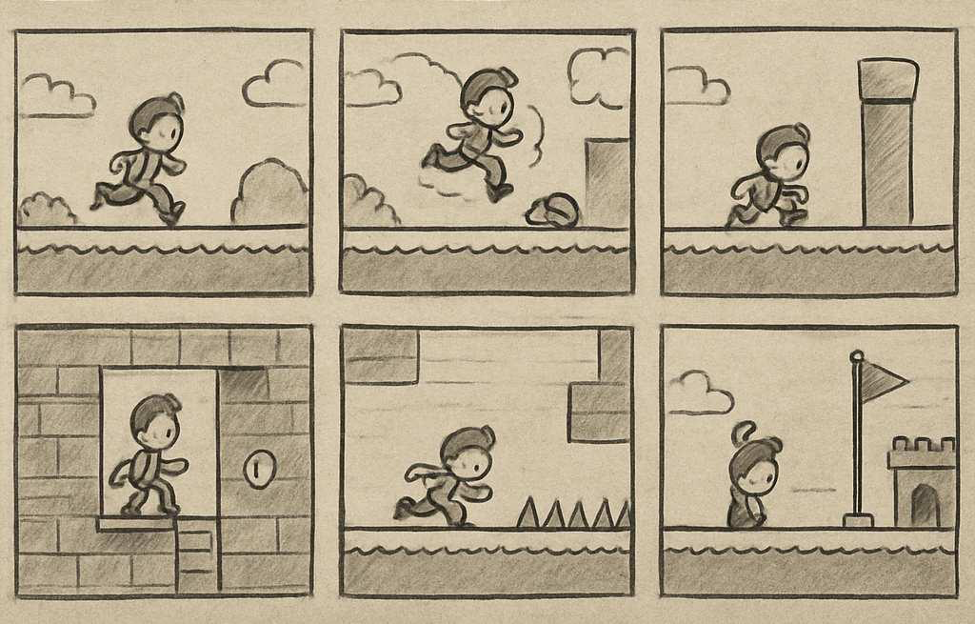Cross-platform game development refers to the creation of software applications that are compatible with multiple operating systems, in this case, Android and iOS. This approach allows developers to reach a broader audience without the need to create separate versions of the game for each platform. Achieving this requires a careful balance of coding practices, user interface design, and performance optimization.
The Role of Game Engines in Cross-Platform Development
Contents
Game engines are essential in simplifying the complexities of cross-platform development. They provide a unified platform to build, test, and deploy games across various systems. By using engines such as Unity and Unreal Engine, developers can write code once and deploy it on multiple platforms, saving valuable time and resources. These engines offer extensive libraries and tools that streamline the development process and ensure compatibility with both Android and iOS.
Moreover, a robust game engine supports various graphical and audio elements, making it easier to create visually stunning and immersive experiences. The engine’s adaptability to different hardware configurations is vital in maintaining performance across a wide range of devices. By leveraging the capabilities of these engines, developers can focus on enhancing gameplay and storytelling without being bogged down by technical constraints.
Balancing User Interface Design Across Platforms
User interface (UI) design is a critical component of iOS and Android game development. A well-designed UI ensures that players can navigate the game easily, regardless of the device they are using. Developers must consider the differences in screen sizes, resolutions, and aspect ratios when designing the UI. Consistency in design helps maintain a cohesive user experience, while adaptability ensures that the game is accessible and enjoyable on both Android and iOS.
To achieve this balance, developers can use responsive design techniques that automatically adjust UI elements based on the device’s specifications. This approach not only enhances usability but also ensures that the game maintains its visual appeal across platforms. By prioritizing intuitive design and clear navigation, developers can create an engaging user experience that resonates with players.
Performance Optimization for Diverse Hardware
Performance optimization is crucial in cross-platform development due to the varying hardware capabilities of Android and iOS devices. Developers must ensure that the game runs smoothly on both high-end and low-end devices, providing a consistent experience for all players. This involves optimizing code, reducing load times, and managing memory usage effectively.
Techniques such as asset compression and efficient resource management can significantly enhance performance. Additionally, developers should prioritize testing on a range of devices to identify potential performance bottlenecks and address them proactively. By focusing on optimization, developers can ensure that their game delivers a seamless experience across platforms.
Crafting Engaging Game Mechanics and Storylines
At the heart of any successful game lies a captivating storyline and engaging mechanics. As you design your cross-platform game, consider how these elements translate across devices.
Creating a Compelling Narrative
A compelling narrative is a powerful tool for player engagement, driving the storyline forward and encouraging players to invest in the game. When developing for multiple platforms, it’s crucial to ensure that the story remains consistent and immersive, regardless of the device.
This consistency extends to the dialogue, character development, and plot progression, which should be meticulously planned and executed. Well-developed characters and a cohesive plot can create emotional connections with players, enhancing their overall gaming experience. By crafting a narrative that resonates with players across platforms, developers can foster a loyal player base and increase game longevity.
Integrating Gameplay with Storytelling
Game mechanics are the rules and systems that define how a player interacts with the game world. When designed effectively, they can enhance storytelling by allowing players to experience the narrative through their actions.
For cross-platform games, mechanics should be intuitive and responsive, taking advantage of each platform’s strengths. Touch controls on mobile devices, for instance, can be creatively employed to deepen player interaction with the game world. By aligning mechanics with the storyline, developers can create a cohesive gaming experience that reinforces the narrative and keeps players engaged.
Designing for Player Interaction and Immersion
Immersive gameplay is crucial in capturing and retaining the interest of players. Developers should focus on creating interactive environments that encourage exploration and discovery. By incorporating elements such as puzzles, challenges, and rewards, developers can enhance player engagement and satisfaction.
Additionally, attention to detail in the game’s world-building and atmosphere can significantly impact player immersion. Sound design, visual effects, and ambient storytelling all contribute to creating a believable and engaging game world. By prioritizing immersion, developers can create memorable gaming experiences that resonate with players across platforms.
Streamlining the Development Process

Developing a cross-platform game is no small feat, and efficiency is key to managing resources and meeting deadlines.
Utilizing Integrated Development Environments (IDEs)
Integrated development environments (IDEs) are invaluable tools in streamlining the development process. Platforms like Visual Studio and Android Studio offer comprehensive support for coding, debugging, and testing, enabling developers to work efficiently. These IDEs provide features such as code autocompletion, error detection, and performance profiling, which simplify development tasks and enhance productivity.
By leveraging the capabilities of modern IDEs, developers can focus on refining the game’s features and mechanics. The collaborative features of these platforms also facilitate teamwork, allowing multiple developers to contribute effectively to the project. With the right tools, developers can streamline their workflow and bring their game to market more quickly.
Implementing Version Control Systems
Version control systems like Git are essential for collaborative development, ensuring that team members can work together seamlessly. These systems track changes to the codebase, allowing developers to revert to previous versions if needed. This is particularly useful in large projects where multiple developers are contributing simultaneously.
By implementing version control, developers can maintain a structured and organized codebase, reducing the likelihood of conflicts and errors. The ability to branch and merge code also facilitates experimentation and innovation, enabling developers to explore new ideas without disrupting the main project. Effective use of version control systems enhances collaboration and improves overall project management.
Automating Testing and Deployment
Automation tools play a significant role in testing and deployment, reducing the time and effort needed to bring the game to market. Automated testing frameworks can perform repetitive testing tasks, freeing developers to focus on more complex issues. These tools can simulate user interactions, identify bugs, and ensure that the game functions correctly across platforms.
Automated deployment processes can also streamline the release of updates and patches, ensuring that players receive the latest version of the game promptly. By automating routine tasks, developers can improve efficiency and allocate resources more effectively, enhancing the overall quality of the game.
The Future of Cross-Platform Mobile Game Development
As technology continues to evolve, the potential for cross-platform mobile game development expands. The advent of cloud gaming and advances in artificial intelligence are set to revolutionize how games are developed and experienced.
Embracing Cloud Gaming Technologies
Cloud gaming technologies are transforming the landscape of mobile game development. These technologies allow games to be streamed directly to devices, reducing the need for powerful local hardware. By leveraging cloud computing, developers can deliver high-quality gaming experiences to a broader audience, regardless of device specifications.
The integration of cloud technologies also opens up new possibilities for game design, enabling developers to create expansive worlds and complex simulations. As cloud gaming continues to evolve, developers who embrace these technologies will be well-positioned to lead the industry and captivate players with innovative experiences.
Integrating Artificial Intelligence in Game Development
Advancements in artificial intelligence (AI) are enhancing the capabilities of game development, providing new tools for creating dynamic and responsive game worlds. AI can be used to develop intelligent NPCs (non-player characters) that interact with players in meaningful ways, enhancing immersion and engagement.
AI-driven analytics can also provide valuable insights into player behavior, allowing developers to tailor the gaming experience to meet player preferences. By integrating AI technologies, developers can create more personalized and adaptive games, offering richer and more immersive experiences to players across platforms.
Exploring Augmented and Virtual Reality Possibilities
The rise of augmented reality (AR) and virtual reality (VR) technologies presents exciting opportunities for cross-platform game development. These technologies allow developers to create immersive experiences that blend the digital and physical worlds. AR and VR can be used to enhance gameplay, offering players new ways to interact with the game environment.
As AR and VR technologies become more accessible, developers can explore innovative game designs that push the boundaries of traditional gaming. By embracing these emerging technologies, developers can create groundbreaking experiences that captivate and inspire players.
Conclusion
Designing a cross-platform game for Android and iOS is a complex yet rewarding process that requires a blend of technical expertise and creative storytelling. By understanding the nuances of each platform and leveraging powerful development tools, you can create a game that not only runs smoothly across devices but also captivates players with its engaging mechanics and compelling narrative.
In this rapidly evolving industry, staying informed about emerging trends and technologies will be crucial for developers aiming to push the boundaries of what cross-platform gaming can achieve. By embracing these challenges, you can craft games that resonate with players and stand the test of time. Whether through cloud gaming, AI integration, or AR and VR exploration, the future of cross-platform mobile game development holds immense potential for innovation and creativity.


